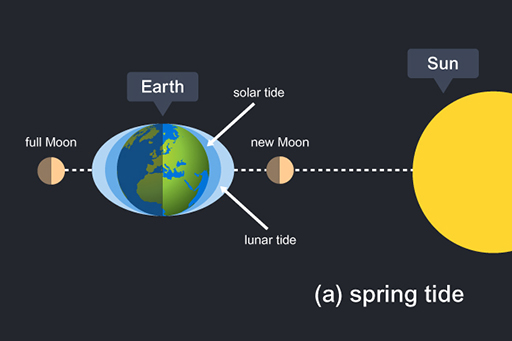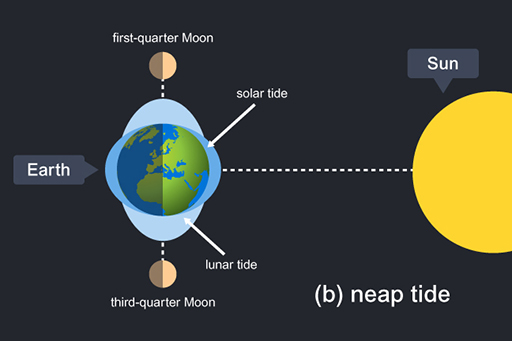3.8 What is a tide?
Tidal forces are the gravitational effect of a body on another body. A well-known example is the Moon’s effect on Earth. The effect of this tidal force is that the Earth becomes slightly elongated, in the direction of the Moon. This is most easily seen in the behaviour of the Earth’s water, where the gravity of the Moon pulls on the Earth’s oceans causing them to swell. The Moon’s gravitational attraction causes two tidal bulges in the Earth’s ocean water, one on the side closer to the Moon and one on the side that is further away.
The Sun also has an effect on the Earth’s oceans. When the Earth, Moon and Sun are all in a line as shown in (a), the lunar and solar tides will add together, creating a higher high tide and a lower low tide. This is known as a spring tide and occurs during the full Moon and new Moon.
When the Earth, Moon and Sun are at right angles as shown in (b), the solar tide acting against the lunar tide will make the total tidal range smaller (you have to add the shapes of the lunar and solar tides to deduce the combined tide). This tide is called a neap tide and occurs during the first-quarter and third-quarter phases of the Moon. The Moon’s gravitational pull also distorts the shape of the solid Earth.


